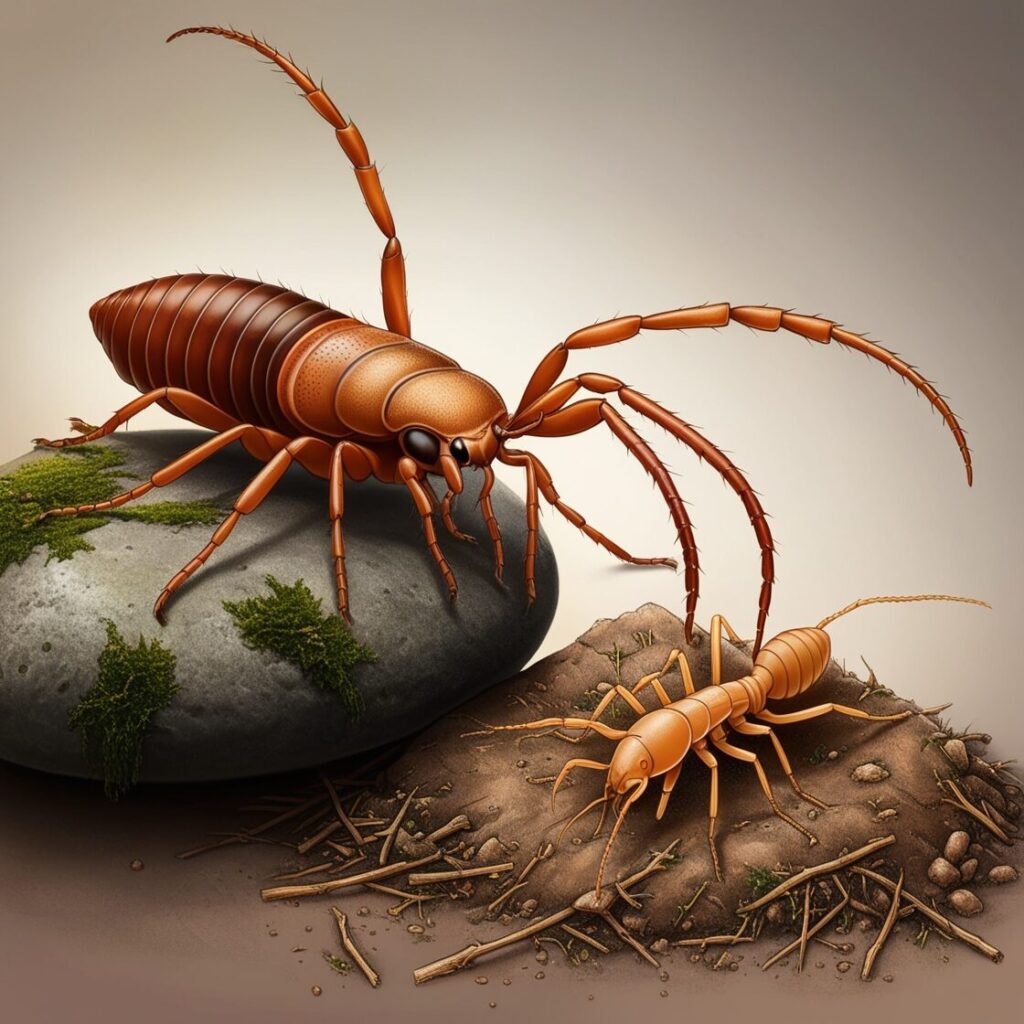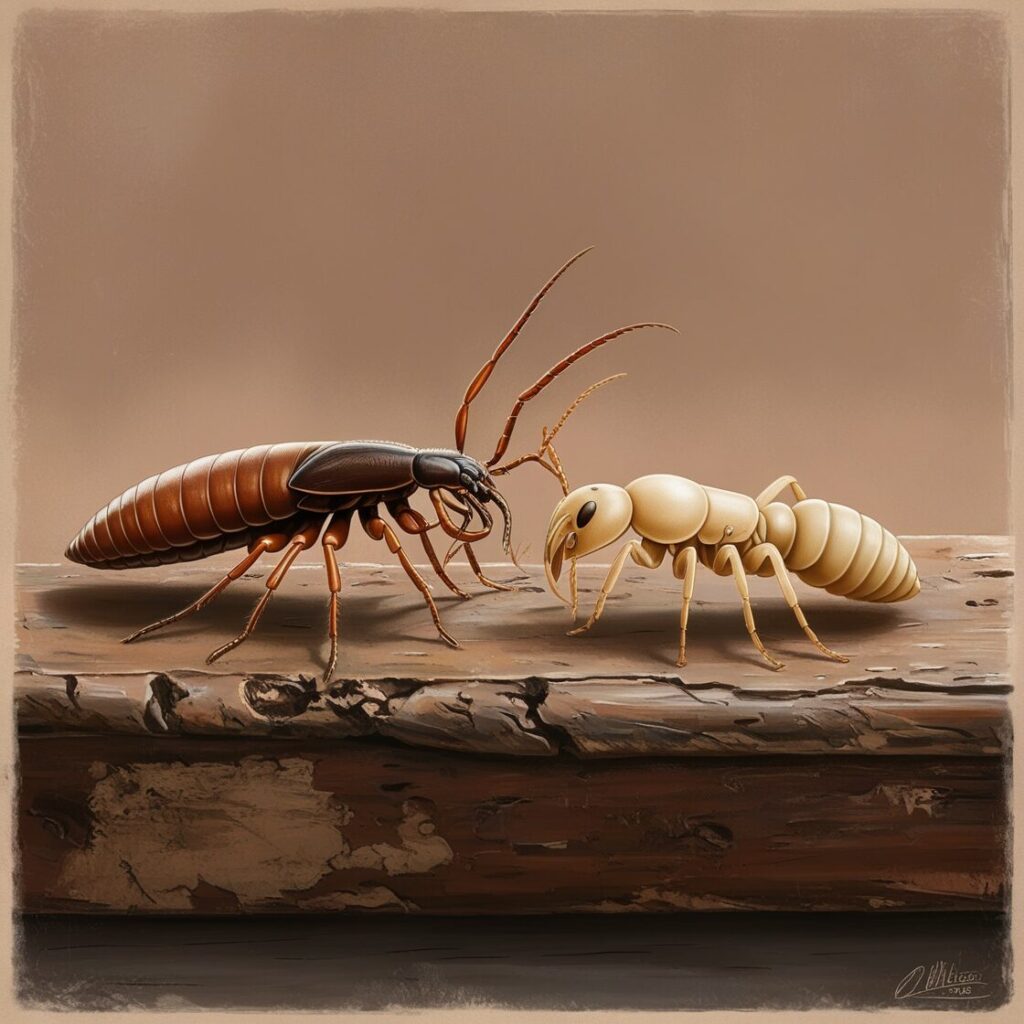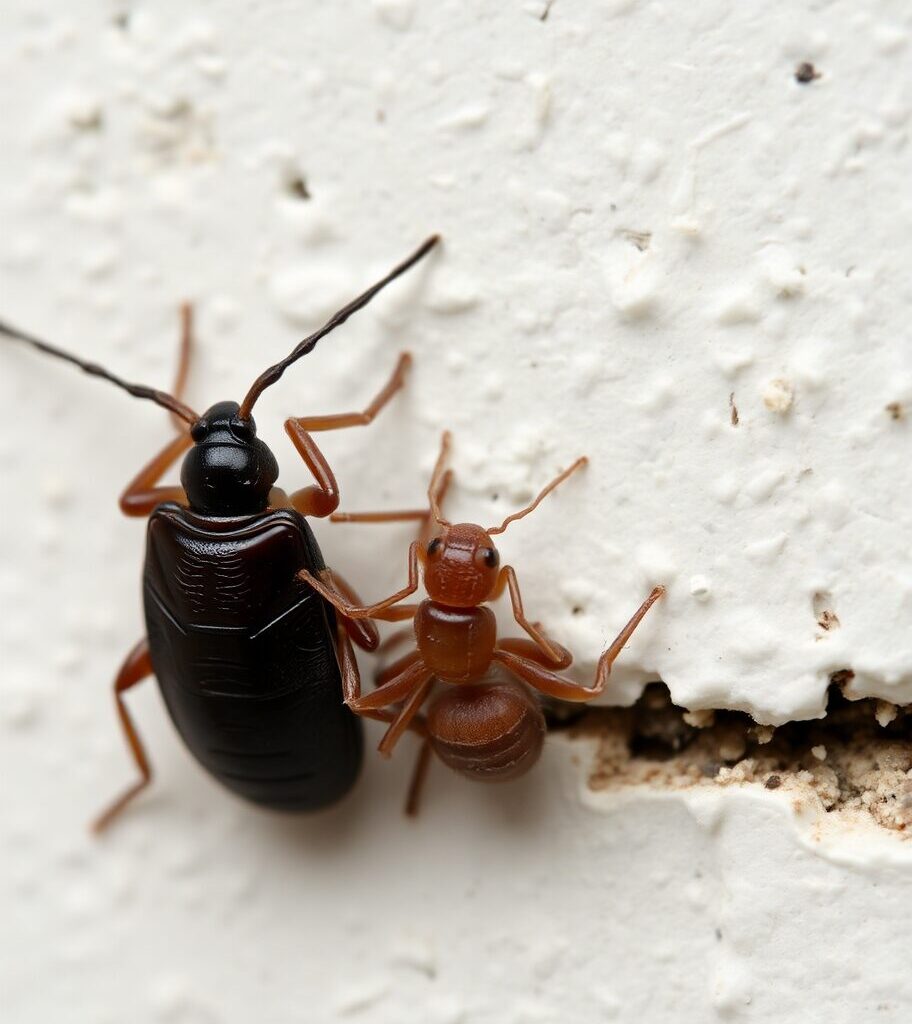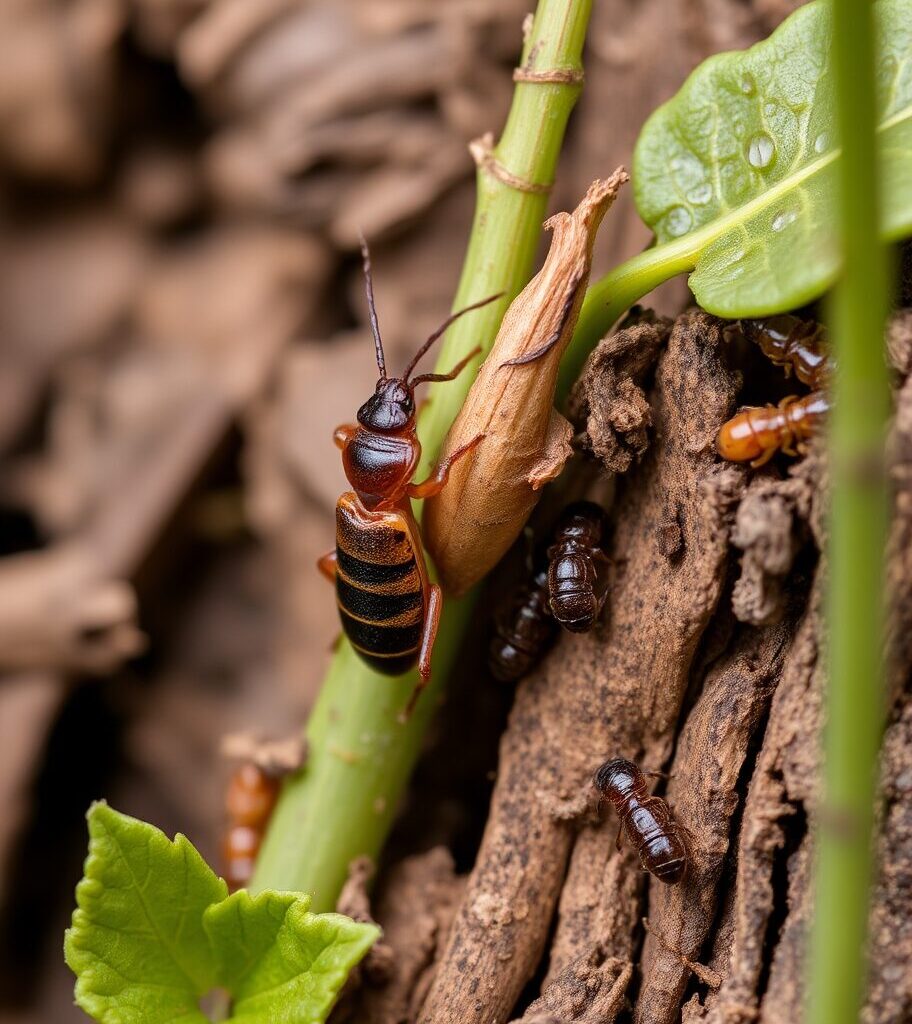Identifying the wrong pest in your home is just as inconvenient as having to leave your wallet at home. It could lead to more damage, higher costs, and a worsening infestation.
Proper identification of pests is your first step in starting any pest control method in your house, office or apartments. Imagine applying termite treatments only to find out later it’s earwigs causing the problem.
This blog post will help you in identifying earwig or termite. But before that let’s look at what Earwig and termite is and which family they belong to.
Earwig vs Termite: Species and Biology

The first major difference between earwigs and termites lies in their species and biological makeup. Termites belong to the order Blattidae and the family Termitidae . They are social insects that live in large colonies, with each colony having a hierarchy that includes workers, soldiers, and reproductive members.
Termites are notorious for destroying wooden structures. They play a role in the decomposition of dead trees but can cause severe damage to homes if left unchecked.
Termites thrive in moist environments and are usually found in decaying wood, wooden furniture, and structural components.
On the other hand, earwigs belong to the order Dermaptera and the family Forficulid Ae. They are solitary insects. They do not live in colonies like termites. Earwigs, often referred to as “pincher bugs” due to their prominent pincers, are scavengers that feed on decaying plant matter and sometimes small insects.
Unlike termites, earwigs are not destructive to homes, although they can become a nuisance when they enter houses, particularly in moist environments.
Now, let’s delve right into the clear distinctions between termites and earwigs to help protect your home and money from further harm.
1. Size and Visibility: Can You Spot Them?

Another key difference between earwigs and termites is their size and appearance, which can help you identify them. Termites are small, soft-bodied insects that typically measure between a quarter and a half inch long.
They have straight antennae, and their color ranges from white to light brown, depending on their caste (workers, soldiers, or reproductive forms). Worker termites are often found underground or within wooden structures, making them harder to spot.
Earwigs, in contrast, are slightly larger, measuring between half an inch to one inch long. They have distinctive long bodies, pincer-like appendages (forceps), and long antennae.Earwigs can often be found hiding under rocks, mulch, or moist areas of your home, like near leaky pipes or basements.
They are more likely to be visible than termites because they roam outdoors at night in search of food.
2. Habitat: Indoor vs. Outdoor Insects

Where these pests live can also help you differentiate between them.
Termites are typically found indoors, nesting inside wooden structures, walls, and furniture. They prefer moist environments, so they often establish colonies in areas with leaky pipes, decaying wood, or poor drainage.
Subterranean termites, a common species, build mud tubes to access above-ground wooden structures, while drywood termites infest dry wood without needing soil.
Earwigs, on the other hand, are outdoor insects that are mostly found outside the home in mulch, woodpiles, or under stones. While they may wander inside during the summer or when temperatures drop, they prefer outdoor habitats with moisture, such as garden beds, decaying leaves, or compost piles.
Earwigs do not live in colonies like termites, which means they are less likely to cause extensive damage if they enter your home.
3. Feeding Habits: Wood vs. Plants

The way termites and earwigs feed further differentiates them.
Termites are known for feeding on cellulose-based materials like wood, which makes them highly destructive pests for homeowners.
Their feeding habits can result in significant structural damage over time, especially when colonies are left untreated. Termites can cause damage to wooden furniture, flooring, walls, and even support beams.
Earwigs, however, are not interested in wood. They are scavengers that primarily feed on decaying plants, live vegetation, and occasionally other insects.
Earwigs may chew on garden plants or decaying organic matter but pose no threat to your home’s wooden structures. Their feeding habits make them less of a concern for homeowners, although they can damage gardens if their population grows.
4. Damage: Structural vs. Nuisance
When it comes to the damage caused by these pests, termites are far more destructive than earwigs.
Termites are a serious concern for homeowners because they can cause thousands of dollars in structural damage. Their colonies can go unnoticed for months or even years, silently destroying wooden elements in your home.
The longer termites are left untreated, the more damage they can cause, which is why it’s critical to apply termite treatment if you suspect an infestation.
Earwigs, in contrast, are more of a nuisance than a serious pest. They may enter homes during the summer or when the weather changes, but they do not cause structural damage.
Earwigs can be easily managed through self-control pest methods, such as sealing entry points and removing excess moisture around the house.
5. Pest Control: Treatment and Prevention
The methods of pest control for termites and earwigs differ significantly due to their behavior and habitat.
Termites require professional pest control measures. If you suspect termite activity, a termite inspection is essential to assess the extent of the infestation.
Professional pest control companies will typically apply a treatment plan that includes chemical barriers, bait systems, and possibly fumigation to eliminate the termite colonies.
Earwigs, on the other hand, can usually be managed with simpler methods. Pest control for earwigs involves reducing moisture around your home, fixing leaky pipes, and sealing cracks and entry points.
In most cases, earwigs can be eliminated through basic pest management techniques without the need for professional intervention.
Conclusion
While earwigs and termites may both be considered pests, they are vastly different in behavior, biology, and the damage they cause. Termites, as social insects, can silently destroy your home’s structure, requiring professional pest control and termite treatment.
Earwigs, however, are solitary scavengers that pose no significant threat to your home and can be managed with basic pest control measures.
By understanding these differences, you can better protect your home from the costly damage termites cause while using self-control pest techniques to keep earwigs at bay.
